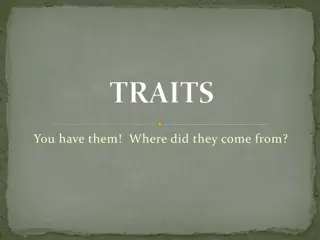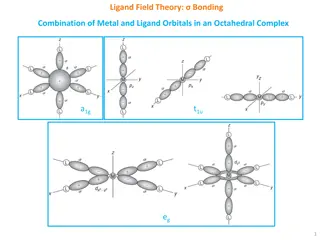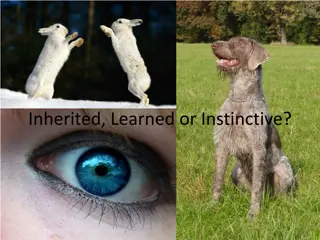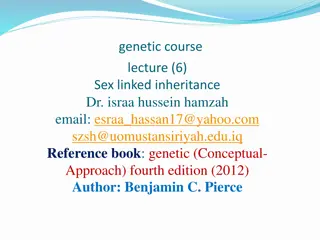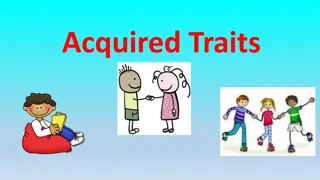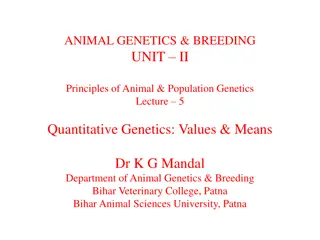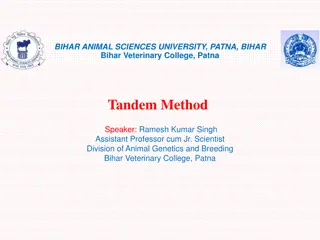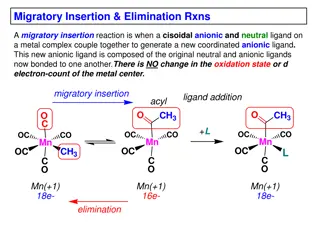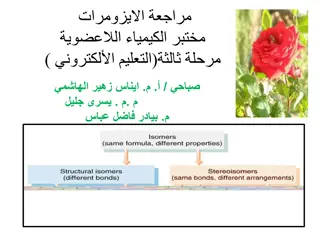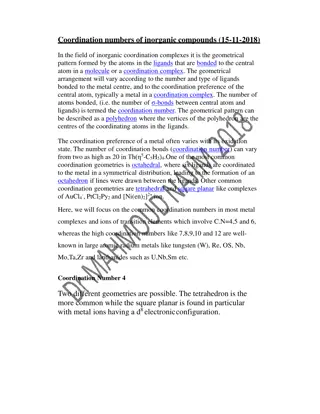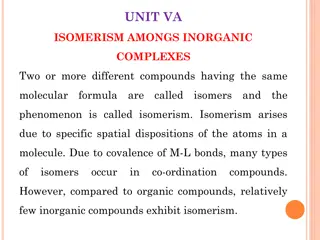Cultural Traits and Complexes in Society
Culture is a complex whole that encompasses various aspects such as knowledge, beliefs, arts, morals, laws, customs, and more. Cultural traits, at the simplest level, are individual tools, acts, objects, or beliefs related to specific situations or needs, while cultural complexes are groups of interrelated traits dominated by one essential trait. These concepts play a significant role in how societies function and pass on traditions from one generation to another.
Download Presentation

Please find below an Image/Link to download the presentation.
The content on the website is provided AS IS for your information and personal use only. It may not be sold, licensed, or shared on other websites without obtaining consent from the author.If you encounter any issues during the download, it is possible that the publisher has removed the file from their server.
You are allowed to download the files provided on this website for personal or commercial use, subject to the condition that they are used lawfully. All files are the property of their respective owners.
The content on the website is provided AS IS for your information and personal use only. It may not be sold, licensed, or shared on other websites without obtaining consent from the author.
E N D
Presentation Transcript
Definition of culture Culture is that complex whole which includes knowledge, believes, arts, morals, laws, customs and any other habits and capabilities acquired by a man as a member of society. A set of shared ideas, actions, principals, beliefs and values.
Elementary concepts of culture 1 Cultural Trait 2 Cultural Complex 3 Cultural Pattern 4 Cultural lag
Cultural Trait Simplest level An individual tool, act,object,technique or belief that is related to a particular situation or need. EX: Using knives, spoons, forks Saying hi to friend The least unit of culture is called Culture Trait. What's interesting about cultural traits is that they are not necessarily static. Cultural traits can combine with each other.
Cultural traits are things that allow one part of a culture to be transmitted to another. For example, the famous football chant of ''Ole, Ole, Ole'' likely arose in Spain but has since become a cultural trait of many soccer fans around the world. Culture trait is something that has been passed on from one generation to another
Cultural Complex a group of culture traits all interrelated and dominated by one essential trait: Nationalism is a culture complex. Culture traits are interrelated with each other, their collective function forms culture complex.
Now, when you talk about culture complex, then patriotism is a culture complex. Even in different countries, people adore different sports say for e.g. football. Now, when different nations plays football. In different countries, they have their own culture around football and they pass it from one generation to another.
Now, when the game of football is played internationally, you find certain rules which every countries follow to play the game of cricket. The rules which is common to all culture traits is a culture complex. Culture complex is a one common traits among all different culture traits.
Cultural Pattern Members of a culture generally have a preferred set of responses to the world.
What Is a "culture Pattern"? A "culture pattern" is a set of related traits and characteristics that describe a particular group of people. The term is commonly used in the field of sociology when studying how groups differ from one another. By doing so, they can better understand how individuals within a particular culture relate to one another as well as what makes modern cultures differ from one another.
Due to patterns we found uniformity in human behavior. For example, the same kind of behavior is expected from the individuals belonging to the particular age group, sex , class, occupation etc. the number of patterns in a culture is less as compared to cultural complexes
Cultural Lag Cultural lag refers to the fact that culture takes time to catch up with technological innovations, resulting in social problems. W.F. Ogburn - an American sociologist who introduced the concept of Cultural Lag in his book Social Change: which was published in the year 1920.
Cultural lag is a term to describe what happens in a social system when the cultural ideas used to regulate social life do not keep pace with other social changes. The spread of cultural ideas from their place of origin to other regions, groups or nations.
Cultural lag theory Cultural Lag is the notion that culture takes time to catch up with technological innovations, and that social problems and conflicts are caused by this lag.
EXAMPLES: The development in the field of industry requires a corresponding change in the system of education. The failure of education to meet the needs of modern industrial development leads to cultural lag.
Over come cultural lag Educational development Awareness of people More concentration on physical development Emphasis on technological development More attention on social changes High opportunity to use modern technology Control market price Increasing GDP
References http://web.mnstate.edu/shoptaug/HUM%20211/Traits%20of%20 culture.ppt(retrieved on 2.10.19) https://www.lcps.org/cms/lib4/VA01000195/Centricity/Do main/863/Culture%20Patterns%20and%20Processes.ppt https://www.reference.com/world-view/culture-pattern- 7341b57dc5e8c7ae(retrieved on 2.10.19) https://www.slideshare.net/misrar123/presentation-on- culture-prepared-by-misrar(retrieved on 9.10.19) https://www.slideserve.com/sandra_john/cultural- patterns(retrieved on 8.10.19)




